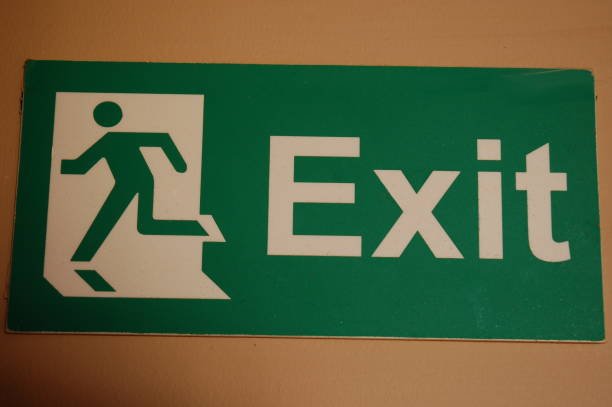Everything You Need to Know About Tritium Exit Sign

Tritium exit sign are an essential part of modern safety protocols in buildings, providing clear and consistent illumination in emergency situations. These self-powered signs are widely used in public, commercial, and industrial spaces to guide occupants to safety when conventional power sources fail. They do not rely on electricity or batteries, making them a reliable and low-maintenance choice for emergency signage.
What Is Tritium?
Tritium is a radioactive isotope of hydrogen that emits low-energy beta radiation. When combined with a phosphor-coated surface, this radiation produces light through a process called radioluminescence. This property makes tritium an ideal material for creating self-luminous devices, including exit signs. Despite its radioactive nature, tritium is considered safe when sealed within durable containers, as it poses minimal risk to health or the environment under normal conditions.
How Do Tritium Exit Signs Work?
Tritium exit signs contain small glass tubes filled with tritium gas. The inner surface of these tubes is coated with a phosphorescent material. As tritium decays, it releases beta particles that interact with the phosphor, producing a steady glow. This glow is visible in low-light or dark environments, ensuring that the exit sign remains legible even during power outages. The self-illuminating feature eliminates the need for external power sources, making these signs highly dependable.
Advantages of Tritium Exit Signs
Energy Independence
One of the primary benefits of tritium exit signs is their energy independence. Unlike traditional electric signs, they do not require a connection to the power grid or backup batteries. This feature makes them ideal for remote or off-grid locations where electrical infrastructure may be limited or unreliable.
Low Maintenance
Tritium exit signs are virtually maintenance-free. They do not require periodic bulb replacements or battery checks, reducing the long-term costs and labor associated with their upkeep. Their robust design ensures consistent performance throughout their lifespan, which typically ranges from 10 to 20 years.
Reliability
These signs provide continuous illumination regardless of external conditions. Whether during a blackout, natural disaster, or other emergencies, tritium exit signs remain operational, offering clear guidance to occupants.
Easy Installation
Tritium exit signs are lightweight and easy to install. They do not require electrical wiring or complex setup procedures, making them a convenient option for various applications. Their portability also allows for easy relocation if building layouts change.
Eco-Friendly Design
Although tritium is a radioactive material, it has a minimal environmental impact when used responsibly. The sealed design of tritium exit signs prevents the release of radioactive material into the environment. Additionally, their low energy footprint contributes to sustainability efforts.
Applications of Tritium Exit Signs
Commercial Buildings
In commercial spaces like offices, malls, and hotels, tritium exit signs provide a dependable solution for emergency evacuation. Their reliability ensures compliance with safety regulations and enhances occupant confidence in emergency preparedness.
Industrial Facilities
Industrial sites often face challenging environments where conventional electric signs may fail. Tritium exit signs are well-suited for such conditions, offering consistent performance in extreme temperatures, humidity, or dusty settings.
Remote Locations
In remote areas where electricity is unavailable or unreliable, tritium exit signs are invaluable. They are commonly used in remote cabins, underground facilities, and offshore platforms to ensure safety without relying on external power sources.
Transportation Hubs
Airports, train stations, and subway systems benefit greatly from tritium exit signs. These high-traffic areas require reliable signage to guide passengers safely, especially during emergencies or power outages.
Military and Government Facilities
Tritium exit signs are widely used in military bases, government buildings, and secure installations. Their self-sufficient design aligns with the stringent safety and operational requirements of these facilities.
Lifespan and Replacement
The lifespan of a tritium exit sign is determined by the half-life of tritium, which is approximately 12.3 years. Most signs are designed to last for 10, 15, or 20 years, depending on the initial amount of tritium used. As the tritium decays over time, the brightness of the sign diminishes. When the illumination drops below acceptable levels, the sign must be replaced to maintain compliance with safety standards.
Disposal and Recycling
Disposing of tritium exit signs requires special care due to the radioactive nature of tritium. These signs should never be discarded in regular trash. Instead, they must be sent to licensed facilities that specialize in handling radioactive materials. Many manufacturers offer take-back programs to ensure proper recycling and disposal, minimizing environmental impact and adhering to regulatory requirements.
Regulatory Compliance
Tritium exit signs are subject to strict regulations to ensure their safe use. In the United States, the Nuclear Regulatory Commission (NRC) oversees the manufacturing, distribution, and disposal of these signs. Building owners and facility managers are responsible for maintaining records of tritium exit signs, including their location, installation date, and disposal documentation. Compliance with these regulations is essential to avoid penalties and ensure public safety.
Safety Considerations
While tritium exit signs are designed to be safe, certain precautions are necessary. If a sign is damaged, it can release tritium gas, which may pose a risk if inhaled in large quantities. In such cases, affected areas should be ventilated, and professional assistance should be sought for cleanup and disposal. It is crucial to avoid tampering with or attempting to repair tritium exit signs to prevent accidental exposure.
Comparing Tritium Exit Signs to Other Options
LED Exit Signs
LED exit signs are a popular alternative to tritium models. They are energy-efficient and long-lasting but require a constant power supply or backup batteries. This reliance on electricity makes them less suitable for remote locations or areas prone to power outages.
Photoluminescent Exit Signs
Photoluminescent exit signs absorb ambient light and release it in the dark. While eco-friendly and maintenance-free, they require exposure to light to recharge, which may not always be feasible. Tritium exit signs, by contrast, provide continuous illumination without external dependencies.
Incandescent and Fluorescent Exit Signs
Traditional incandescent and fluorescent exit signs are less common due to their high energy consumption and frequent maintenance needs. They are gradually being phased out in favor of more efficient and reliable options like tritium and LED signs.
Cost Considerations
The initial cost of tritium exit signs is higher than some alternatives, but their low maintenance requirements and long lifespan often offset this expense. When evaluating the total cost of ownership, including installation, maintenance, and replacement, tritium exit signs can be a cost-effective solution for many applications.
Innovations and Future Trends
Advances in technology continue to improve the performance and safety of tritium exit signs. Enhanced materials and manufacturing processes are extending their lifespan and reducing environmental impact. Researchers are also exploring ways to recycle tritium more efficiently, further contributing to sustainability efforts. As safety standards evolve, tritium exit signs are likely to remain a key component of emergency preparedness strategies.
Conclusion
Tritium exit signs are a reliable, low-maintenance, and energy-independent solution for emergency signage. Their unique properties make them an invaluable asset in various settings, from commercial buildings to remote locations. While they require careful handling and disposal, their benefits far outweigh the challenges. By understanding the features, applications, and regulatory requirements of tritium exit signs, building owners and facility managers can make informed decisions to enhance safety and compliance.
What's Your Reaction?




















